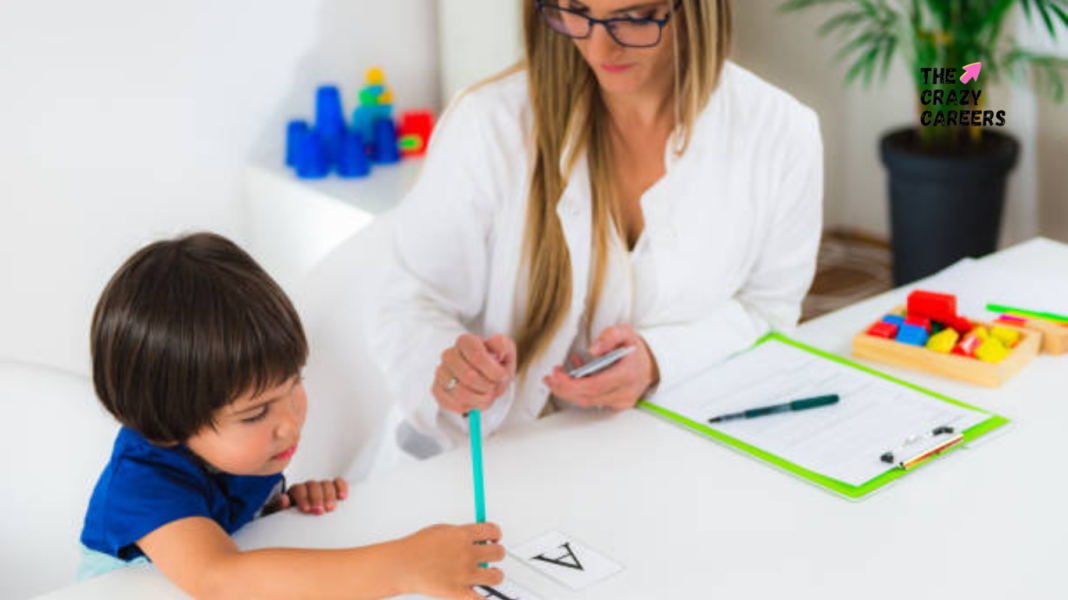Parents may find it challenging to navigate the special education system to secure the necessary support for their children’s academic, emotional, and social development. Dr. Kalpana Gangaramani, the Founder and Managing Director of Target Publications Pvt Ltd., will offer valuable insights about special educational needs, choosing the right educational setting, and applying effective strategies for supportive learning in this comprehensive guide. Here’s is a parent’s guide to special education system.
Watch our Podcast, subscribe and stay tuned | The Crazy Careers Podcast
Understanding the special education system needs:
Special education is designed to differently abled children. It provides suitable assistance and resources for children with individual learning requirements to help them achieve their full potential.
The following categories of disabilities are used to assess eligibility for special education:
- A physical disability disrupts the physical functioning, coordination, and movement of one’s body.
- Sensory disabilities impact one or multiple senses, such as blindness, deafness, loss of touch, or smell.
- Intellectual disability refers to limitations in cognitive functions, such as language, social interactions, and self-care abilities.
- Emotional and behavioural disability refers to a person’s inability to sense, control, and express emotions.
- Development disabilities impair a person’s physical, intellectual, social, or emotional development.
- Common signs of special education
Parents may observe certain signs indicating that their child may require special education services, such as;
Students with special needs may exhibit physical challenges, such as difficulties with mobility or fine motor skills. Academically, they may encounter difficulties in learning or understanding concepts, particularly in areas like reading and pronunciation. Socially, they might struggle with social interactions, including making eye contact, initiating conversations, and interpreting social cues. Behaviorally, they may exhibit difficulties in staying focused, being organized, or controlling impulses.
- Early identification & Needs
Identifying special education needs early is vital for providing timely support to children. By recognizing early symptoms and conducting evaluations, parents and educators can work together to address these needs and ensure children receive appropriate special education services, including IEPs (Individualized Education Program), specialized instruction, accommodations, related services, and assistive technology.
Choosing the right educational setting for special education system:
The choice of educational setting for a child with special needs is a significant decision. There are two primary options: mainstream schools and specialized schools.
- Mainstream schools integrate differently abled student into regular classrooms. They offer social integration and exposure to a diverse peer group but may lack individualised education and specialised resources.
- Specialised schools cater specifically to differently abled students, offering tailored support, specialised services, and trained staff, but they may limit social integration and can be more expensive.
Support services, policies, and home strategies for supportive learning:
The Indian government has implemented several schemes to support differently abled individuals.
- Maharashtra recognizes various disabilities under the Rights of Persons with Disabilities Act. To accommodate these students, the Maharashtra State Board offers exam-related concessions for certain categories of students taking the SSC and HSC exams.
- There is also a provision like shadow teacher as an additional support system in mainstream classrooms for children with special needs. They work hand-in-hand with lead teachers to bridge the gap between the specific needs of these children and the resources available within the regular classroom setting.
- Home Strategies for Supportive Learning:
To support your child’s learning at home, create a calm, organized study space and use tools that can make learning easier. Visual aids and auditory cues can be helpful, and breaking down tasks into smaller steps can prevent overwhelm. Seek advice from professionals or special educators, encourage social interactions, and maintain open communication with your child’s teachers. Celebrate their achievements and use positive reinforcement to keep them motivated.
Also Read | Why Memory Learning is Important for Students?
Before embarking on the journey through the special education system, parents should familiarize themselves with the different types of disabilities, recognize early signs, and carefully consider the most appropriate educational setting for their child. By implementing effective home strategies and seeking support from professionals, parents can create a nurturing environment that fosters their child’s growth and development. With the right guidance and resources, differently abled children can thrive and achieve their full potential.
About Author: Dr. Kalpana Gangaramani, Founder & Managing Director, Target Publications, Pvt. Ltd




